Sha Lo Tung is a wonderfully tranquil, beautiful place.
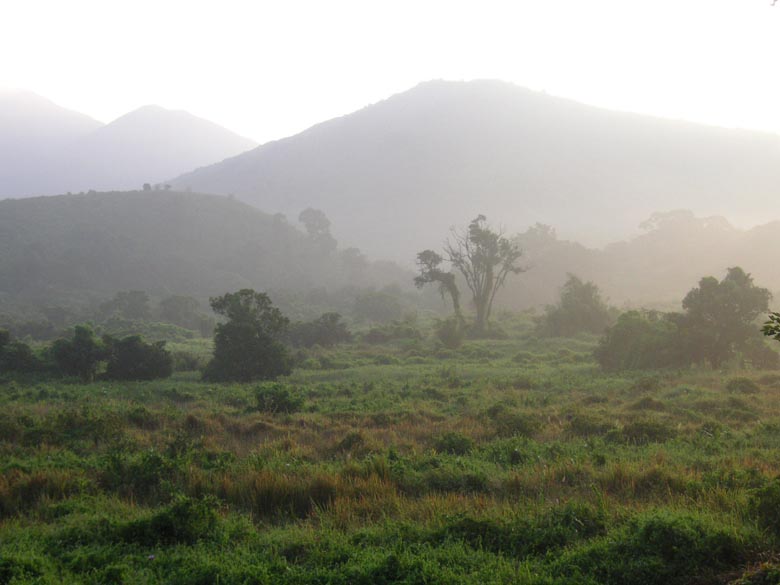
Though it lies just outside Tai Po Market in Hong Kong’s northeast New Territories, Sha Lo Tung is a wonderfully tranquil, beautiful place. Ringed by hills, and with gently undulating land with sandy soil, its name means “Sand Carried in a Basket”.
This tranquillity belies the fact Shalotung has in recent decades become the focus of arguments raging between would-be developers and conservationists. [Written in 2005; as I add note in 2023, Shalotung was spared development, with some conservation management work underway.]
Several development plans have been mooted, involving a golf course, luxury housing and a columbarium; all have so far been rejected on environmental grounds. And Shalotung remains one of Hong Kong’s loveliest places.

It’s hidden away, most readily reached by an unobtrusive, narrow road leading up from the edge of Tai Po Industrial Estate. There are trails here; and as the going’s easy, you can stroll around, passing abandoned fields, woods, streams, and villages that are sadly fallen into decay.
There’s a small car park at the top of the road, and from here a footpath crosses a stream, then runs by groves of trees and tall, thick stemmed bamboo.
Soon, there’s a hamlet on the left: Cheung UK, largest of the clusters of farmhouses in Shalotung. The houses still stand; there are new red paper banners on a small ancestral hall; yet the buildings’ white paint is mostly fading, as the hamlet threatens to decay completely. In recent years, vegetation has smothered many of the buildings.

Someday, Hong Kong might look back, and wish it had retained more of the traditional villages like this; maybe wonder if Shalotung offered a chance to turn some houses into accommodation for visitors (from Hong Kong and overseas), who could enjoy “agri-tourism” in this lovely landscape. Yet our city-focused tourism industry and government have largely ignored the area. Recently, however, locals have established a “store” in one of the old houses – offering sweet bean curd, drinks and other fare for hikers.


You can explore the nearby village, where at least some of the houses are said to be three hundred years old. Some homes appear were evidently simply abandoned, with many belongings left behind.
Just before the village, there’s a right turn, to a path through overgrown, abandoned fields, to a junction. Here, stone signposts indicate a left turn, to Hok Tau, while straight on leads towards Ping Shan Chai.

The path on the left crosses a stream, with clear water, overhung by trees. It’s streams like this that help make Sha Lo Tung a major site for dragonflies, with over 70 species, six of them internationally endangered, four of them known only from the Hong Kong. Shalotung also home to rare plants, Hong Kong paradise fish and other threatened species, so is an important site for biodiversity in south China.
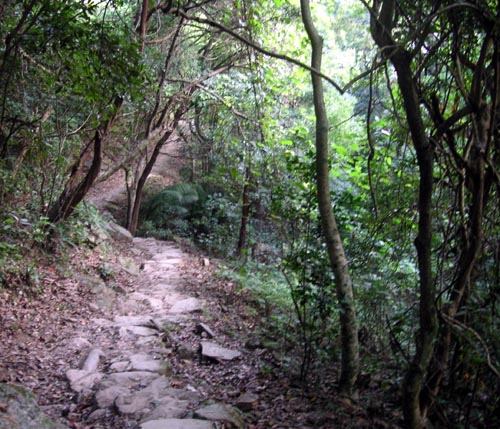
Soon, this path follows a small, wooded gorge cut by the main stream as it exits Shalotung.
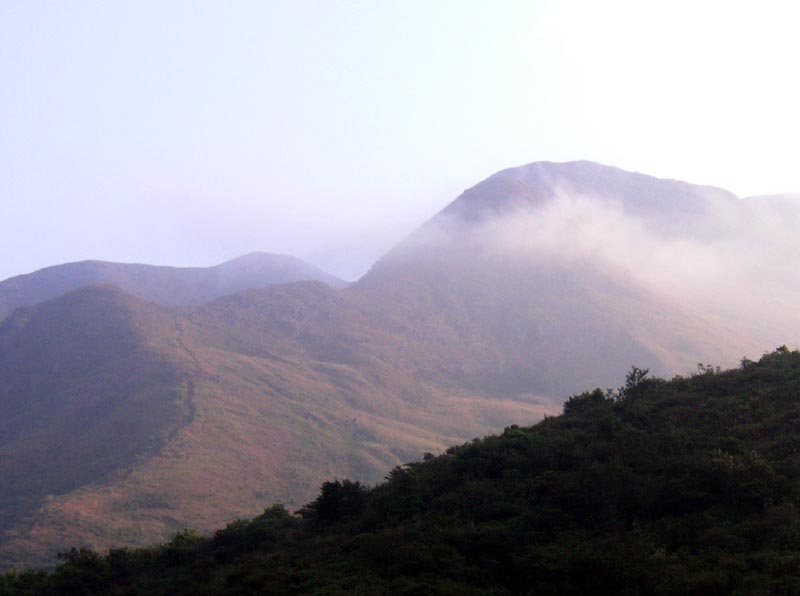
The path leaves the trees, and you can enjoy great views of the Pat Sin Leng Range. Then, you can walk down to Hok Tau Reservoir, and follow the road to Hok Tau Wai, to catch a minibus to Fanling East Rail station.
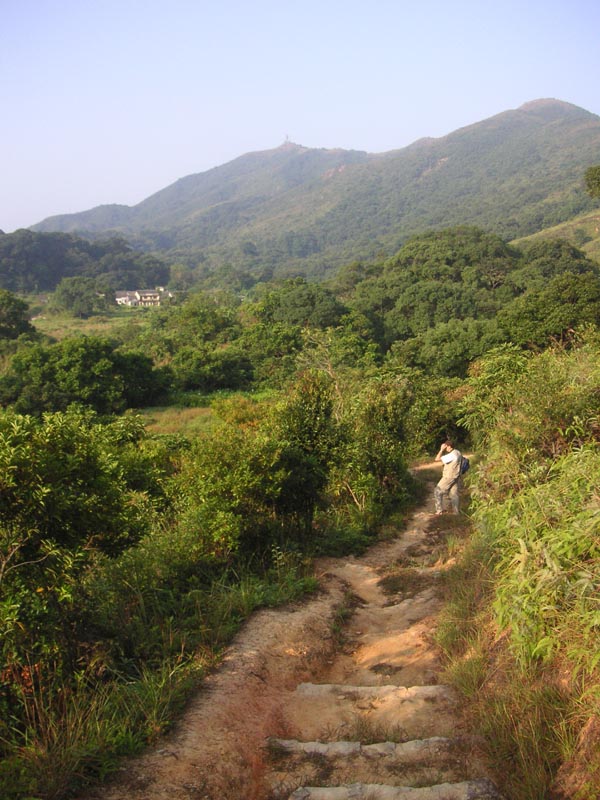
Or, head back to the junction in Shalotung, and take the track towards Ping Shan Chai. This cuts up the side of the basin, with views across the area, including Cheung UK [above].

After crossing a low ridge, the path drops into a valley, with the Pat Sin Leng Range looming above: this is splendid, wild country.

Ping Shan Chai hamlet is gone, crumbled to rubble. But its fung shui wood remains; a fine place to stop for a while, and linger by the stream. From here, you can walk on down to Hok Tau; or retrace your steps through Shalotung.
The road to Shalotung lies on Ting Kok Road, immediately after the turn to Fung Yuen. You might ask if taxi driver (from Tai Po Market East Rail station) will take you all the way up the road, but more likely just to the junction at the bottom. But, the road isn’t steep, and the walk up it is through trees.

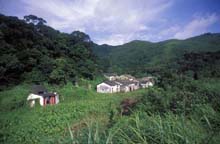 Sha Lo Tung is a wonderfully tranquil, beautiful place.
Sha Lo Tung is a wonderfully tranquil, beautiful place.